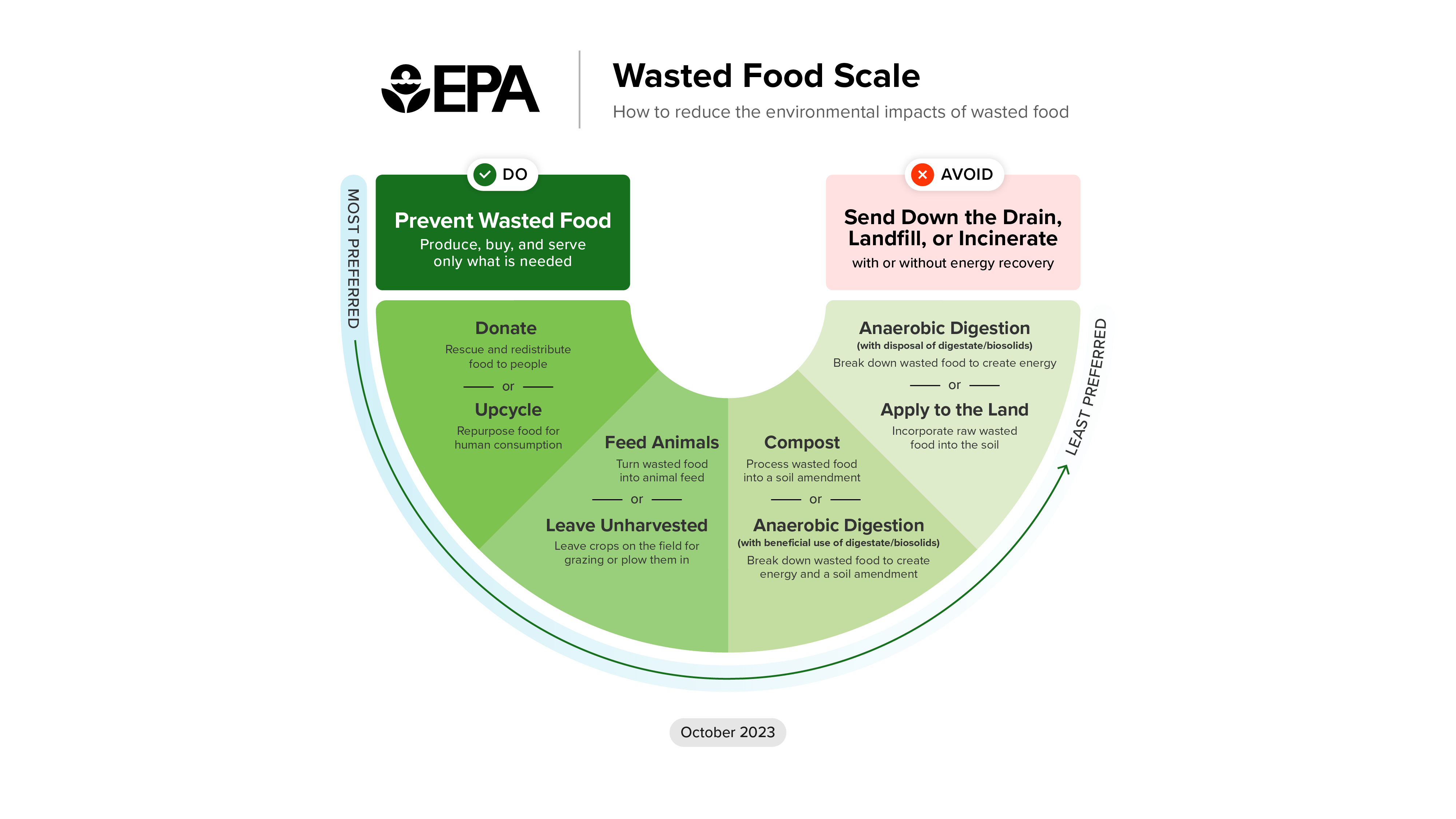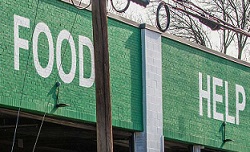Food Loss and Waste
Reducing Food Waste/Back-to-School
Back-to-school themed tips to help students and parents reduce food waste.
New FDA Food Code Reduces Barriers to Food Donations
The FDA recently released 2022 Food Code helps reduce barriers to food donations by clarifying for the first time that food donations from retail food establishments are acceptable as long as proper food safety practices are followed.
Key Steps for Donating Food – For Retail Food Establishments
In the United States, food waste is estimated at between 30–40 percent of the food supply. This figure, based on estimates from USDA’s Economic Research Service of food loss at the retail and consumer levels, corresponded to approximately 133 billion pounds and $161 billion worth of food in 2010. Food is the single largest category of material placed in municipal landfills and represents wasted nourishment that could have helped feed families in need. Additionally, water, energy, and labor used to produce wasted food could have been employed for other purposes. Effectively reducing food waste will require cooperation among federal, state, tribal and local governments, faith-based institutions, environmental organizations, communities, consumers, and the entire supply chain.
New Step in Federal Interagency Collaboration
In May 2024, The U.S. Food and Drug Administration (FDA) signed the formal agreement with the U.S. Department of Agriculture (USDA) and the U.S. Environmental Protection Agency (EPA) to renew their Federal Interagency Collaboration to Reduce Food Loss and Waste (FIFLAW). Additionally, the U.S. Agency for International Development (USAID) joined the collaboration as an important federal partner that has an international reach in reducing food loss and waste, marking a significant expansion of the federal collaboration.
This 2024 agreement updates a series of agreements and national strategies that began in 2018, all aimed at improving coordination and communication across federal agencies attempting to better educate Americans on the impacts and importance of reducing food loss and waste.
“The FDA is committed to achieving the goal of a 50% reduction of food loss and waste by 2030 through a whole-of-government approach in collaboration with the USDA, EPA and USAID,” said FDA Commissioner Robert M. Califf, M.D. “We also recognize the role that empowered U.S. consumers can play in helping to reach the national food waste reduction goal. We encourage consumers and retailers to use the FDA’s food loss and waste reduction resources including the 2022 Food Code, Tips to Reduce Food Waste and the Food Loss and Waste Social Media Toolkit to bolster their efforts.”
On June 12, 2024, the FDA, USDA and EPA FDA announced the “National Strategy for Reducing Food Loss and Waste and Recycling Organics” as part of President Biden’s whole-of-government approach to tackle climate change, feed people, address environmental justice, and promote a circular economy.
The draft strategy featured four objectives:
- Prevent food loss.
- Prevent food waste.
- Increase the recycling rate for all organic waste.
- Support policies that incentivize and encourage food loss and waste prevention and organics recycling.
Additional Activities
On April 9, 2019, USDA, EPA, and FDA signed a formal agreement with ReFED, Inc. to collaborate on efforts to reduce food waste in the United States. The agencies and ReFED agreed to develop approaches for measuring the success of food waste strategies, advance data collection and measurement efforts, and to participate as appropriate in the Further with Food: Center for Food Loss and Waste partnership, among other activities. The agreement was renewed in September 2021 and will remain in effect for three years.
USDA, EPA and FDA renewed the interagency agreement on June 1, 2024 with the Food Waste Reduction Alliance, representing three major sectors of the supply chain - food manufacturing, retail, and restaurant and food service. Through this partnership, the three agencies formalized industry education and outreach efforts with the Consumer Brands Association, FMI - The Food Industry Association, and the National Restaurant Association, the three founding partners of FWRA. The Alliance pursues three goals: reducing the amount of food waste generated; increasing the amount of safe, nutritious food donated to those in need; and diverting food waste from landfills.
Resources
The following are resources to help you do your part to reduce food loss and waste. You play a part in reaching the national food waste reduction goal – to reduce food waste by 50% by the year 2030.
Start using these tips today to reduce food waste, save money, and protect the environment.
From FDA
Reducing Food Waste/Back-to-School
Back-to-school themed tips to help students and parents reduce food waste.
Key Steps for Donating Food
Information retail food establishments should keep in mind when donating food.
How to Cut Food Waste and Maintain Food Safety
Learn how food waste and food safety are connected.
Tips to Reduce Food Waste
Learn to reduce food waste at the grocery store or when eating out; in the kitchen while storing and preparing; at home while cooking, serving, and enjoying food with family and friends.
Food Waste Animated Videos
Check out animated videos that can help you take action to reduce food waste.
Food Loss and Waste Social Media Toolkit
Resources to help you spread the word about reducing food waste. Includes sample social media posts.
Infographics
View infographics on a variety of food loss and waste related topics in the "Reducing Food Waste" tab.
From EPA
Wasted food is a growing problem in our modern society and an untapped opportunity. In 2018 alone, over 63 million tons of food waste were generated in the commercial, institutional, and residential sectors, with only 4 percent managed via composting. EPA estimates that more food reaches landfills than any other single material in our everyday trash, constituting 24 percent of municipal solid waste. EPA works with stakeholders throughout the food system to reduce waste through partnership, leadership and action.
Learn more about Sustainable Management of Food from EPA.
From USDA
USDA is doing its part to help make preventing food waste the first-best option for farmers, businesses, organizations, and consumers. A large number of USDA programs contribute to this objective, ranging from those supporting market and distributional efficiencies to those educating consumers about safe food storage. Selected new and ongoing activities directly contributing to the reduction of food loss and waste are listed below.
Download the FoodKeeper App – The FoodKeeper app provides guidance on safe handling, preparation, and storage of more than 650 food and beverage items.
Watch USDA Food Loss and Waste Videos – USDA has a food loss and waste playlist in YouTube with Videos in English and Spanish.
Learn about USDA's Food Waste Activities.





